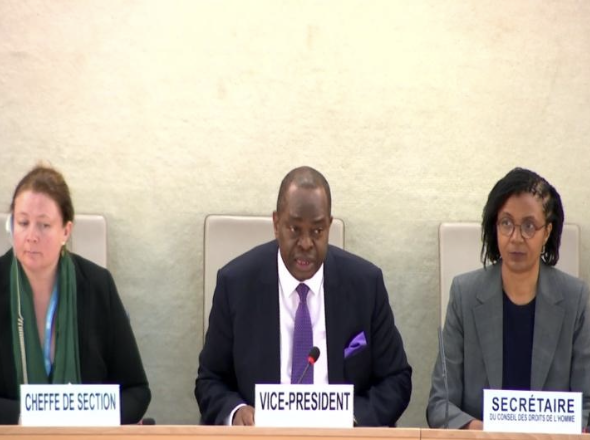| by: Rachel Kyes/GICJ |  |
Trafficking-in-persons is a global scourge that affects the lives of millions of people around the world. Estimates of the number of trafficked individuals are crude and often misrepresent the complexities within trafficking, but the magnitude of the problem is greater than anyone would like to acknowledge. While vulnerabilities to trafficking are extensive on their own, the impact of climate change compounds these susceptibilities, making the challenge of fighting trafficking-in-persons even greater. Ignoring the ways in which climate change and trafficking intersect is a death knell for all movements to end this form of exploitation.
Attention paid to the global issue of trafficking-in-persons has increased greatly over the past thirty years. In 2000, the United Nations General Assembly adopted the Protocol to Prevent, Suppress and Punish Trafficking in Persons Especially Women and Children, commonly known as the Trafficking Protocol. In this Protocol, trafficking-in-persons is defined as “the recruitment, transportation, transfer, harbouring, or receipt of persons, by means of the threat or use of force or other means of coercion, of abduction, of fraud, of deception, of the abuse of power or of a position of vulnerability or of the giving or receiving of payments or benefits to achieve the consent of a person having control over another person, for the purpose of exploitation.”
There are three elements that this definition is commonly broken down into: the act, the means, and the purpose. The act is what has been done, meaning the “recruitment, transportation, harbouring, or receipt of persons.” The individual, group, or organization who has carried out the act is considered a trafficker, regardless of their membership in organized crime or large-scale trafficking rings. It is also important to note that this definition does not require movement; an individual can be trafficked without ever leaving their home or local community. Recognizing these key factors can reduce the prevalence of common misperceptions that trafficking constitutes the movement across borders of an individual exploited by a criminal syndicate; an individual can be trafficked by a family member within their own community, requiring no movement.
The means is the ‘how’ of trafficking-in-persons. In the Protocol, this constitutes “the threat or use of force or other means of coercion, of abduction, of fraud, of deception, of the abuse of power or of a position of vulnerability or of the giving or receiving of payments or benefits.” There is no requirement for multiple or all of the various means to be used in order for a situation to constitute trafficking-in-persons. Additionally, as the definition notes, abuse of a position of vulnerability is a means of trafficking. This, as will be discussed later, is particularly relevant in the context of vulnerabilities due to and driven by climate change.
Climate change is the most pressing issue of modern-day life. It causes famine, increases risk of conflict, and displaces thousands from their communities. In the words of the High Commissioner for Human Rights, “[t]he world has never seen a threat to human rights of this scope. This is not a situation where any country, any institution, any policy-maker can stand on the sidelines. The economies of all nations; the institutional, political, social and cultural fabric of every State; and the rights of all your people – and future generations – will be impacted.”
Geneva International Centre for Justice (GICJ) recognizes the urgent need to reframe the viewpoint on both climate change and trafficking-in-persons. The international community, led by the United Nations, must recognize and continue to present both climate change and trafficking-in-persons as threats to the human rights of individuals across the globe. GICJ welcomes the efforts of the Special Rapporteur on trafficking in persons to frame the issue of trafficking within a human rights narrative; only with the recognition that trafficking can never be fully eliminated through a law enforcement-based approach can progress be made. A human rights-based approach must accept that exclusionary and prohibitive migration policies exacerbates vulnerabilities to trafficking and drives individuals into the hands of those who seek to exploit them.
Vulnerabilities to trafficking-in-persons are closely tied to power: those who lack power and privilege in a society are the most vulnerable. Climate change exacerbates these vulnerabilities, as it has been well-documented that the effects of climate change are felt most strongly by those who are unequal to the norm. As a result, focus needs to be placed on addressing the intersection of climate change and trafficking-in-persons to ensure that all are protected and free.
Click here to read the full report.
Justice, Human rights, Geneva, geneva4justice, GICJ, Geneva International Centre For Justice







